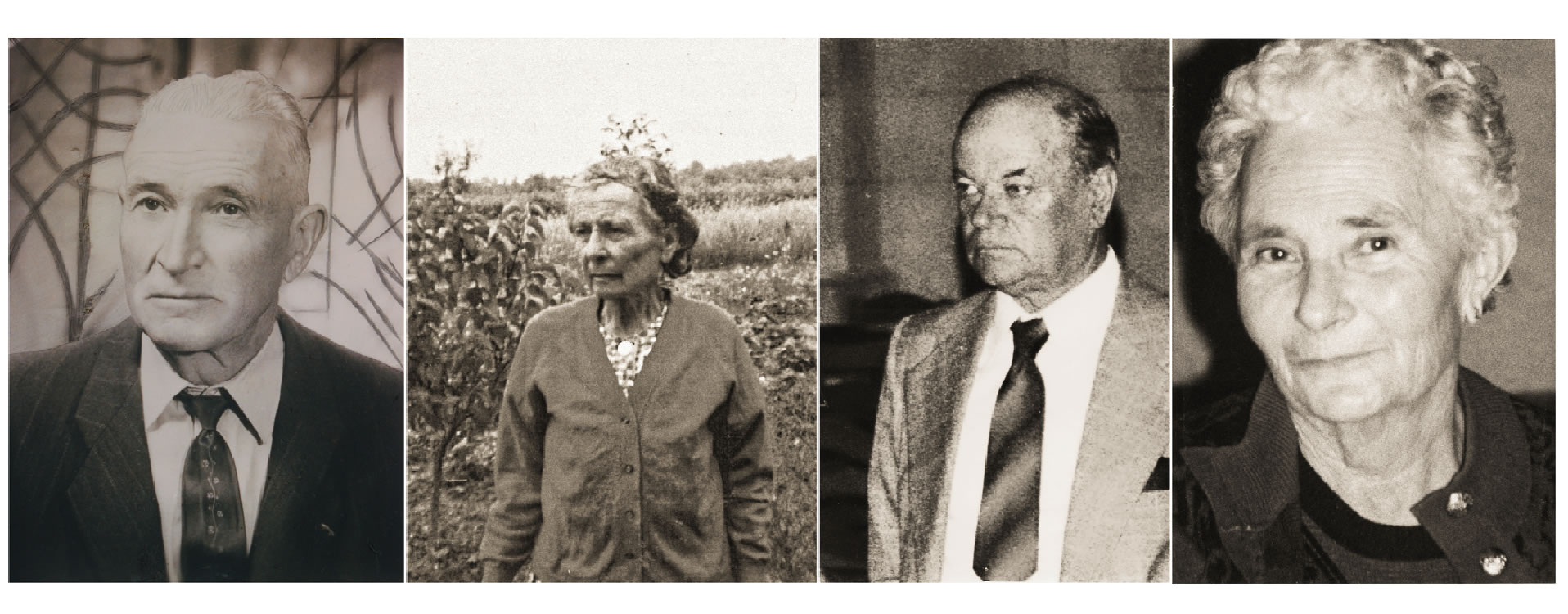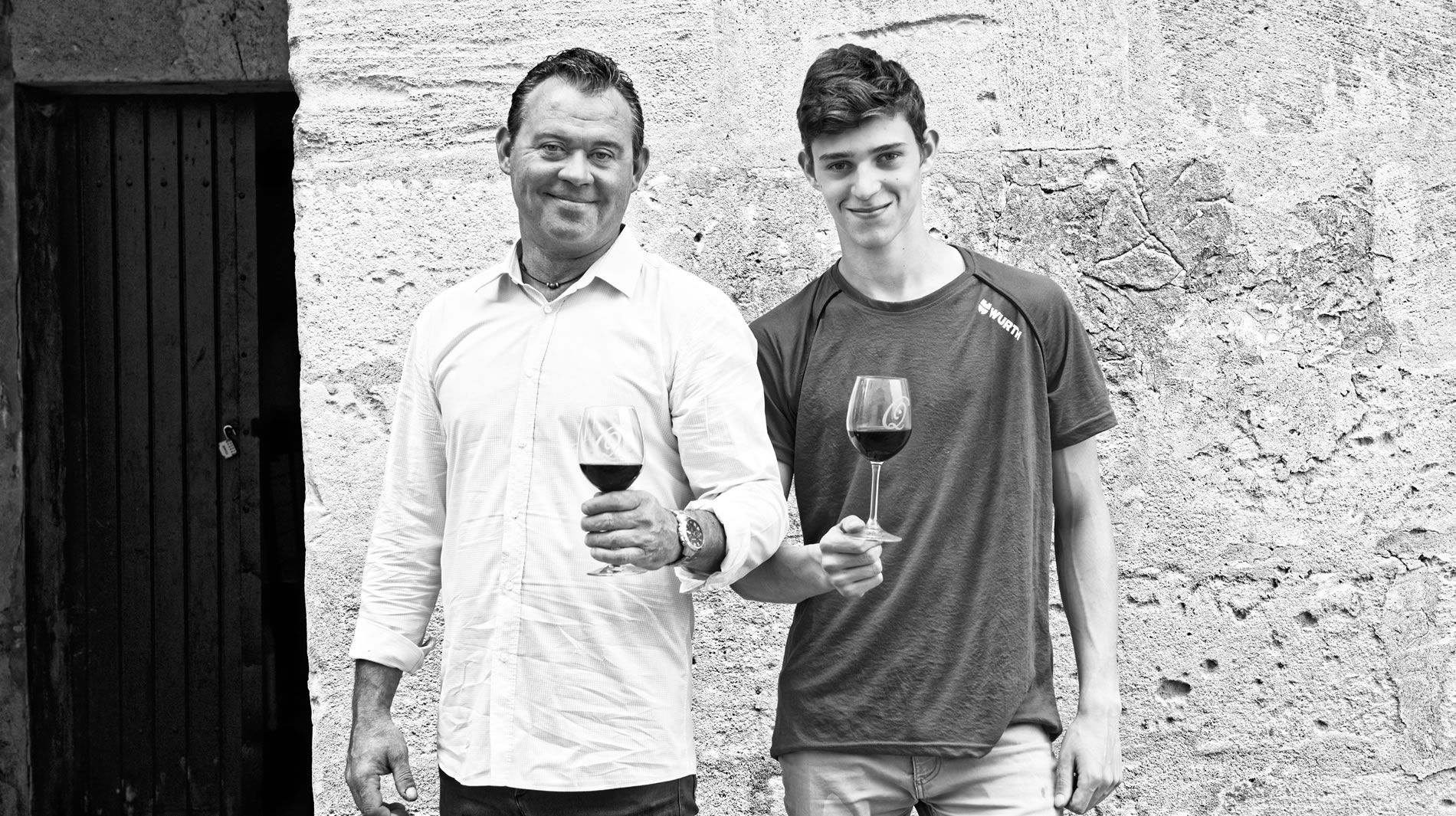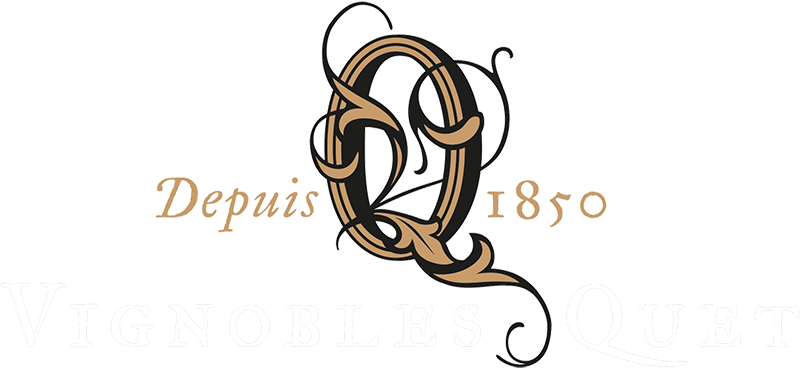The history of the vineyards QUET
“It was only over the last century, however,
that much of what we know as the Vignobles QUET came to be.”
It was only over the last century, however, that much of what we know as the Vignobles QUET came to be.

“The great grandparents”
It was after the end of the “great war”, that of 14-18, that Joseph VIROLLE married Denise CLERMONTET.
They are both from a family of small farmers, one of Montagne the other of Les Artigues de Lusssac.
At the end of their career, they will be at the head of a farm of about twenty hectares including ten hectares of vineyards shared between the appellations of “Bordeaux Supérieur” and “Montagne Saint Emilion” which was vinified at the cooperative cellar of Montagne of which Joseph VIROLLE was one of the founders in 1936.
Indeed, since 1936, and therefore the creation of the AOC, the name of the AOC became important for the marketing of their union was born a little girl, Josette VIROLLE.
“The grandparents”
As the Second World War heated up in 1940, René QUET married Josette VIROLLE. René QUET also came from a rural family in Les Artigues de Lussac, re-formed following the death of his father in World War I.
The couple inherited a few plots of land from René’s family in 1951, mostly vineyards and mostly located in Saint Emilion and Saint Christophe des Bardes. This allowed the family to produce and sell true “Saint Emilion” wine.
In 1956, the couple had the chance to purchase a further twenty hectares from another owner. While essential to the future development of the estate, the effects of the legendary winter of 1956 on the vines proved a major challenge for the couple. Following these severe frosts, most of the plots needed to be completely replanted. It was only after several years of toil and labour that they began to bear fruit.
Like most of their fellow producers, the couple sold their wine in bulk to traders.
In the meantime, René and Josette had two sons, Jean Claude and Jean Pierre, who in 1973 took the reins of an estate spanning at the time 3.5 hectares in Bordeaux Supérieur, 11.5 hectares in Montagne Saint Emilion and 3.7 hectares in Saint Emilion.
“The parents”
Jean Claude and Jean Pierre arrived at a time of great change in the wine business. The Bordeaux wine industry was rocked by the Maison Cruze affair and it was no longer possible to sell wine in bulk. Producers suddenly needed to bottle their own wine and find their own clients. The brothers set themselves two objectives: growing the business by planting vines on all their available land and thereby remaining competitive, and increasing their bottle sales in order to ramp up their margins.
In 1976, they bought up a failing farm which added 3.5 hectares to their land and gave them a welcome new addition to their range: the Lalande de Pomerol appellation.
At the time, it was still relatively easy to build up a client portfolio, as long as you were willing to tour France and find people to taste your wine. This generation suffered their share of drama too, with the severe frosts of 1985. While smaller in geographic scale than the deep freeze of 1956, the damage to the affected areas was still considerable.
It took some 8 to 10 years to fully restore the vineyards to their previous state.
And while this was not easy, it allowed the pair to create regular vineyards with a certified vine density of 5,000 vines per hectare.
This work to upgrade the vineyards came alongside a major effort to modernise the wine cellar and the wine-making installations. One of the lasting effects of this was the decision not to renew their production contract with the Montagne Cooperative, effectively doubling the volume of wine to be produced in individual cellar. To cope with this extra volume, they built a new building to house new stainless steel vats. These brought the total capacity to 6,000hl, and allowed the estate to thermo-regulate the fermentation process. The entire process was updated and upgraded, and this included their work in the vines to improve their yields and the quality of the grapes (green pruning, green harvests and a reduction in the use of chemicals).
With the purchase of a further 2.5 hectares in Montagne Saint Emilion in 2008, they handed the reins to the next generation. The 45 hectare estate they inherited consisted of 21 hectares of Bordeaux Supérieur, 18 hectares of Montagne Saint Emilion, 4.5 hectares of Saint Emilion and 1.5 hectares of Lalande de Pomerol.

“The children”
Sophie and David are Jean Pierre’s children and they will be in charge of ensuring the continuity of the vineyard. At first, it appeared to them essential, to participate in the eco-responsible approach, to review the vineyard management techniques by adapting, in particular, a better control of inputs(in progress for an HVE certification3) they have embarked on a new evolution of commercial habits in order to compensate for the decline in sales in the traditional circuits which are primarily oriented towards France. It is thus by turning towards the export that they will continue the development of the Vineyards QUET knowing that the challenge is difficult and that the action is to be carried out in the time ……

Le fils de David, Corentin suit les traces de son père.

